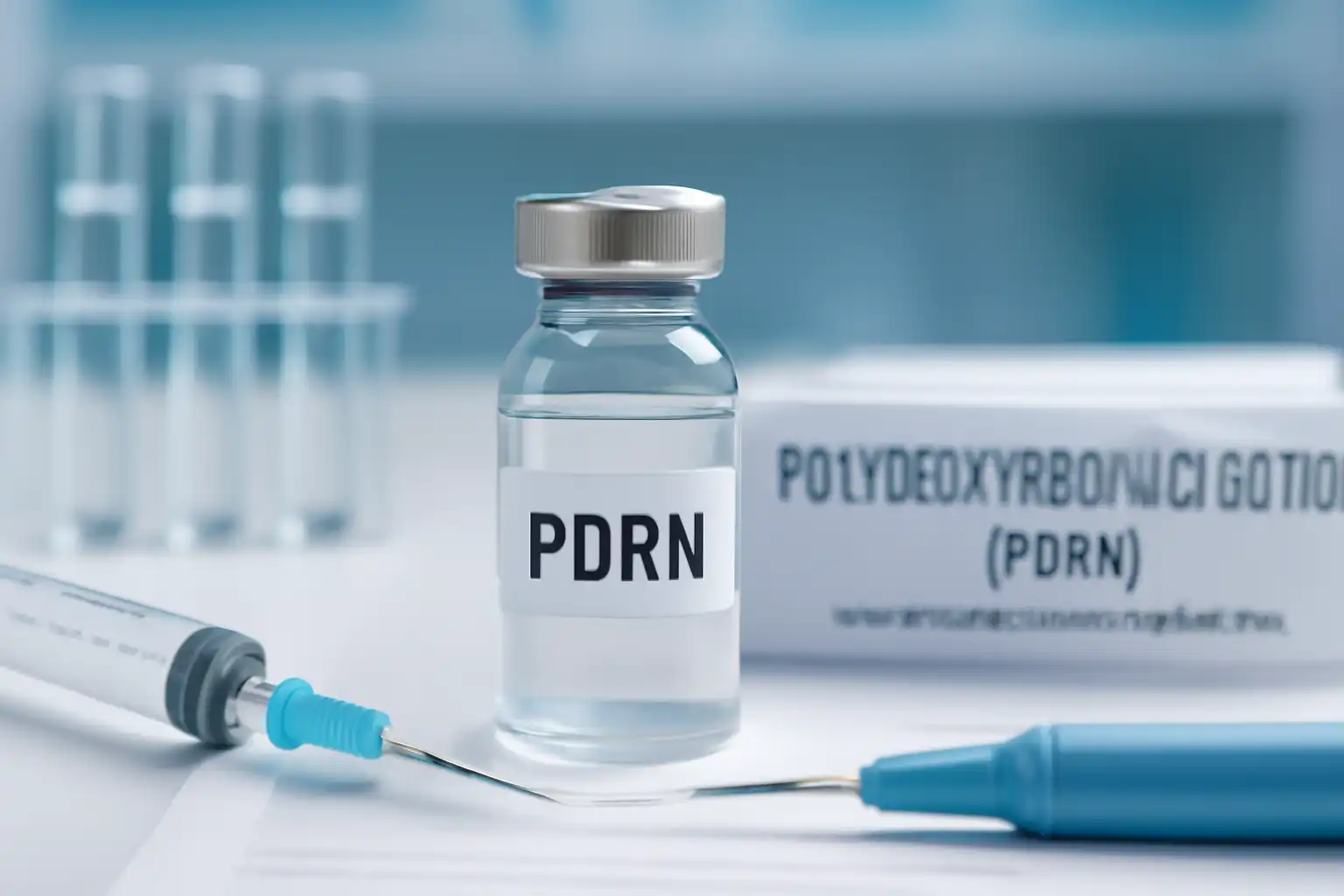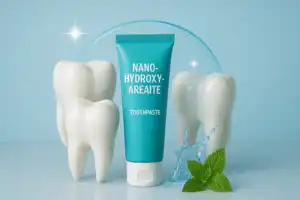Polydeoxyribonucleotide (PDRN) is a biotechnologically derived substance that has been gaining attention in both the medical and cosmetic industries. Known for its regenerative properties, PDRN is used in various treatments, including wound healing, skin rejuvenation, and cellular repair. Its use is expanding in the realm of aesthetics and regenerative medicine, making it essential for both healthcare professionals and consumers to understand its applications, benefits, and safety.
1. What is Polydeoxyribonucleotide (PDRN)?
Polydeoxyribonucleotide (PDRN) is a DNA-derived compound composed of fragments of deoxyribonucleic acid (DNA) that are extracted from salmon sperm. PDRN is essentially a form of polynucleotide, meaning it is made up of long chains of nucleotides (the building blocks of DNA). It is known for its ability to stimulate cell repair and regeneration, making it a valuable ingredient in both dermatological and regenerative medicine.
PDRN works by promoting the synthesis of DNA and RNA within cells, which helps in tissue repair and regeneration. This mechanism supports the natural healing process in the body by encouraging cell growth and tissue regeneration. As a result, PDRN has been used in treatments aimed at improving skin health, promoting wound healing, and even managing certain chronic conditions like arthritis.
2. What is the Use of PDRN?
The applications of PDRN are wide-ranging, particularly in the fields of dermatology, aesthetics, and regenerative medicine. Here are some of the most common uses:
A. Skin Rejuvenation and Anti-Aging
PDRN has become particularly popular in the aesthetic industry due to its regenerative effects on the skin. It is commonly used in treatments aimed at reducing the visible signs of aging, such as fine lines, wrinkles, and sagging skin. By stimulating the production of collagen and elastin, PDRN helps to improve the skin’s elasticity and overall appearance.
In cosmetic dermatology, PDRN is often used in mesotherapy, a technique where small amounts of PDRN are injected into the skin to improve skin texture and tone. It promotes cell renewal and hydration, helping to reduce pigmentation issues and skin damage caused by aging or sun exposure.
B. Wound Healing
PDRN has demonstrated its ability to accelerate the healing process of wounds. This can be particularly beneficial for individuals recovering from surgical procedures, burns, or injuries. The compound stimulates the repair of damaged tissues by enhancing cellular regeneration and promoting faster healing.
Medical professionals have found PDRN effective in treating chronic wounds and conditions like ulcers, as it accelerates the recovery of tissues by stimulating the local production of growth factors and improving blood flow to the affected area.
C. Joint and Bone Health
In regenerative medicine, PDRN is also used to treat conditions affecting the joints and bones, such as arthritis. By stimulating the regeneration of cartilage and improving cellular repair, PDRN can help reduce inflammation and promote healing in areas affected by joint degradation. It is often used as part of injection therapies aimed at relieving pain and promoting recovery in conditions like osteoarthritis.
D. Hair Regrowth
Recent studies suggest that PDRN may be beneficial for individuals experiencing hair loss. The compound is believed to stimulate hair follicle regeneration, potentially helping with conditions such as androgenetic alopecia (male and female pattern baldness). By promoting cell turnover and tissue regeneration in the scalp, PDRN may enhance the health and function of hair follicles.
3. Is Salmon PDRN Safe?
One of the most common questions surrounding PDRN is whether salmon-derived PDRN is safe for use, particularly in cosmetic and medical treatments. The short answer is that salmon-derived PDRN is generally considered safe when used in appropriate clinical settings by trained professionals.
Salmon DNA is often used because it is very similar to human DNA, allowing it to interact effectively with human cells. However, as with any biologically derived substance, there can be concerns about potential allergic reactions. Before undergoing any PDRN-based treatment, it is important to undergo a patch test or consult with a healthcare provider to ensure that the individual will not have an adverse reaction.
While the risk of side effects is low, some individuals may experience mild irritation or swelling at the site of injection, which usually resolves within a few days. As always, it is essential to use PDRN products that are sourced from reputable manufacturers to avoid any contamination or substandard quality.
4. What Are the Benefits of Polydeoxyribonucleotide?
PDRN offers several notable benefits, especially in the context of regenerative medicine and skin care. These benefits include:
A. Promotes Cellular Repair and Regeneration
PDRN’s primary mechanism of action is the stimulation of cell regeneration. By encouraging the production of new DNA and RNA in cells, PDRN enhances tissue repair and accelerates the natural healing process. This makes it particularly useful in treating wounds, scars, and other skin imperfections.
B. Improves Skin Hydration and Elasticity
PDRN helps to stimulate the production of collagen and elastin, key proteins that are essential for maintaining skin elasticity and moisture levels. As a result, it can reduce the appearance of fine lines and wrinkles, leading to smoother, firmer skin.
C. Reduces Inflammation and Pain
In regenerative medicine, PDRN is often used to treat conditions involving inflammation, such as arthritis. By reducing inflammation at the cellular level, PDRN can help relieve pain and improve mobility in affected areas.
D. Accelerates Wound Healing
PDRN is widely used in both medical and cosmetic settings to speed up wound healing. Whether it’s post-surgical recovery or the treatment of chronic wounds, PDRN’s regenerative effects can promote faster recovery and minimize scarring.
5. Is PDRN Better Than Hyaluronic Acid?
Both PDRN and hyaluronic acid are popular ingredients in the cosmetic industry, but they serve different purposes. Hyaluronic acid is primarily used to hydrate and plump the skin, as it has the ability to attract and retain water. It is commonly used in facial fillers and moisturizers to improve skin texture and reduce wrinkles.
PDRN, on the other hand, goes beyond hydration and actively stimulates cell regeneration and tissue repair. It helps with collagen production, making the skin appear firmer and more youthful. While hyaluronic acid provides immediate plumping effects, PDRN offers long-term improvements by improving skin elasticity and promoting the natural healing process.
Ultimately, whether PDRN or hyaluronic acid is “better” depends on the individual’s needs. For individuals looking for deep skin rejuvenation and regeneration, PDRN may be the superior choice. For those seeking immediate hydration and volume, hyaluronic acid may be more suitable.
6. Can You Use Retinol and PDRN Together?
Retinol, a derivative of Vitamin A, is known for its anti-aging properties. It accelerates cell turnover, promotes collagen production, and helps with skin texture and pigmentation issues. Given its potency, retinol can sometimes cause irritation, especially when first introduced into a skincare routine.
Combining retinol and PDRN can offer enhanced results, as both work to rejuvenate the skin, but they do so in different ways. Retinol helps with surface-level cell turnover, while PDRN works deeper by promoting cellular repair and regeneration. However, it is important to use these two ingredients carefully.
If you plan to use both, it’s recommended to apply retinol at night and PDRN during the day, as retinol can make the skin more sensitive to sunlight. You should also consult with a dermatologist to ensure the combination is suitable for your skin type and to avoid any potential irritation.









Be First to Comment